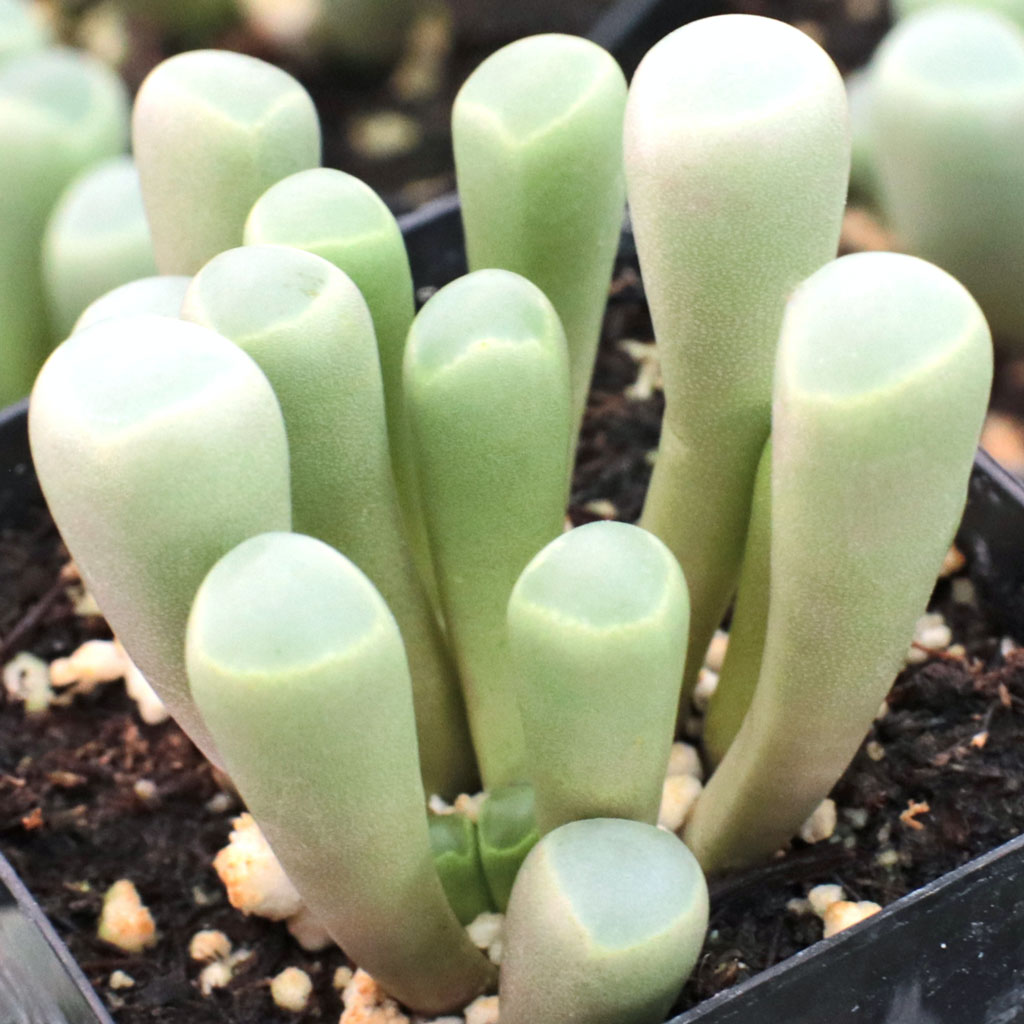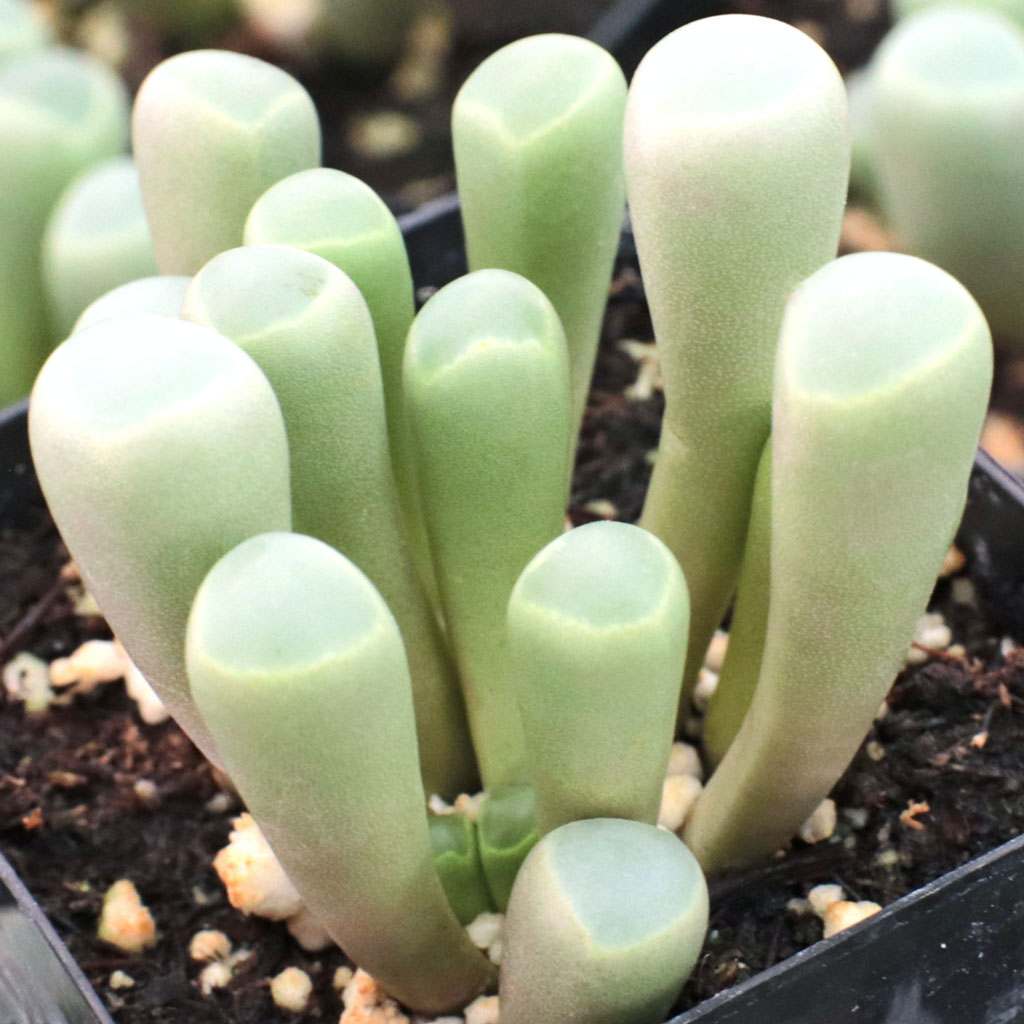Staff Answer
Apr 22, 2022 - 11:44 AM
Unfortunately, there are many reasons why a succulent might have leaves that turn a more yellow color. Here are a few of the most common:
1) Overwatering. If you've recently changed your watering schedule or repotted the plant, this could be the issue. Repotting can lead to overwatering, if you repotted into a more organic soil. However, even summer dormancy can cause baby toes to be more sensitive to overwatering. To really be sure, check the stem and roots of the plant. Is there some yellowing or darkening there? Are the stems and roots mushy? If yes, then it is likely overwatering.
2) Leaf senescence. This is a natural process by which many plants lose their oldest leaves to free up resources for young leaves. Frequently, young leaves can shade older leaves. This makes it advantageous for that plant to lose those older leaves as they are no longer producing the vital sugars that the plant needs. Fortunately, this process is normal and healthy so there would be no need for worry. Are the outer most leaves turning yellow? Do the stems and roots appear healthy and firm? If so, than this is the most likely scenario.
3) Nutrient deficiency. This one isn't common because succulents don't need much in the way of nutrients. However, nitrogen deficiency is marked by a yellowing of the old leaves. They will also turn translucent and mushy, but the stem and roots will be fine. Plants that are nitrogen deficient will transfer nitrogen from the old leaves to the new leaves, yellowing them in the process. This appears similar to leaf senescence but happens to most or all of the outermost leaves at roughly the same time. This can be fixed with a balanced and dilute fertilizer. Unless the fertilizer is marketed specifically for succulents, dilute it by half before applying it to succulents.
If none of these sound like your plant, you can email our awesome customer service team at info@mountaincrestgardens.com with your concerns and a few clear photos. If you email them, be sure to include the following information:
1) Growing conditions (full sun, part sun, filtered sun, indoors, outdoors, etc.)
2) Soil used for planting
3) Watering schedule
4) Does the container have a hole for drainage?
1) Overwatering. If you've recently changed your watering schedule or repotted the plant, this could be the issue. Repotting can lead to overwatering, if you repotted into a more organic soil. However, even summer dormancy can cause baby toes to be more sensitive to overwatering. To really be sure, check the stem and roots of the plant. Is there some yellowing or darkening there? Are the stems and roots mushy? If yes, then it is likely overwatering.
2) Leaf senescence. This is a natural process by which many plants lose their oldest leaves to free up resources for young leaves. Frequently, young leaves can shade older leaves. This makes it advantageous for that plant to lose those older leaves as they are no longer producing the vital sugars that the plant needs. Fortunately, this process is normal and healthy so there would be no need for worry. Are the outer most leaves turning yellow? Do the stems and roots appear healthy and firm? If so, than this is the most likely scenario.
3) Nutrient deficiency. This one isn't common because succulents don't need much in the way of nutrients. However, nitrogen deficiency is marked by a yellowing of the old leaves. They will also turn translucent and mushy, but the stem and roots will be fine. Plants that are nitrogen deficient will transfer nitrogen from the old leaves to the new leaves, yellowing them in the process. This appears similar to leaf senescence but happens to most or all of the outermost leaves at roughly the same time. This can be fixed with a balanced and dilute fertilizer. Unless the fertilizer is marketed specifically for succulents, dilute it by half before applying it to succulents.
If none of these sound like your plant, you can email our awesome customer service team at info@mountaincrestgardens.com with your concerns and a few clear photos. If you email them, be sure to include the following information:
1) Growing conditions (full sun, part sun, filtered sun, indoors, outdoors, etc.)
2) Soil used for planting
3) Watering schedule
4) Does the container have a hole for drainage?





Add New Comment